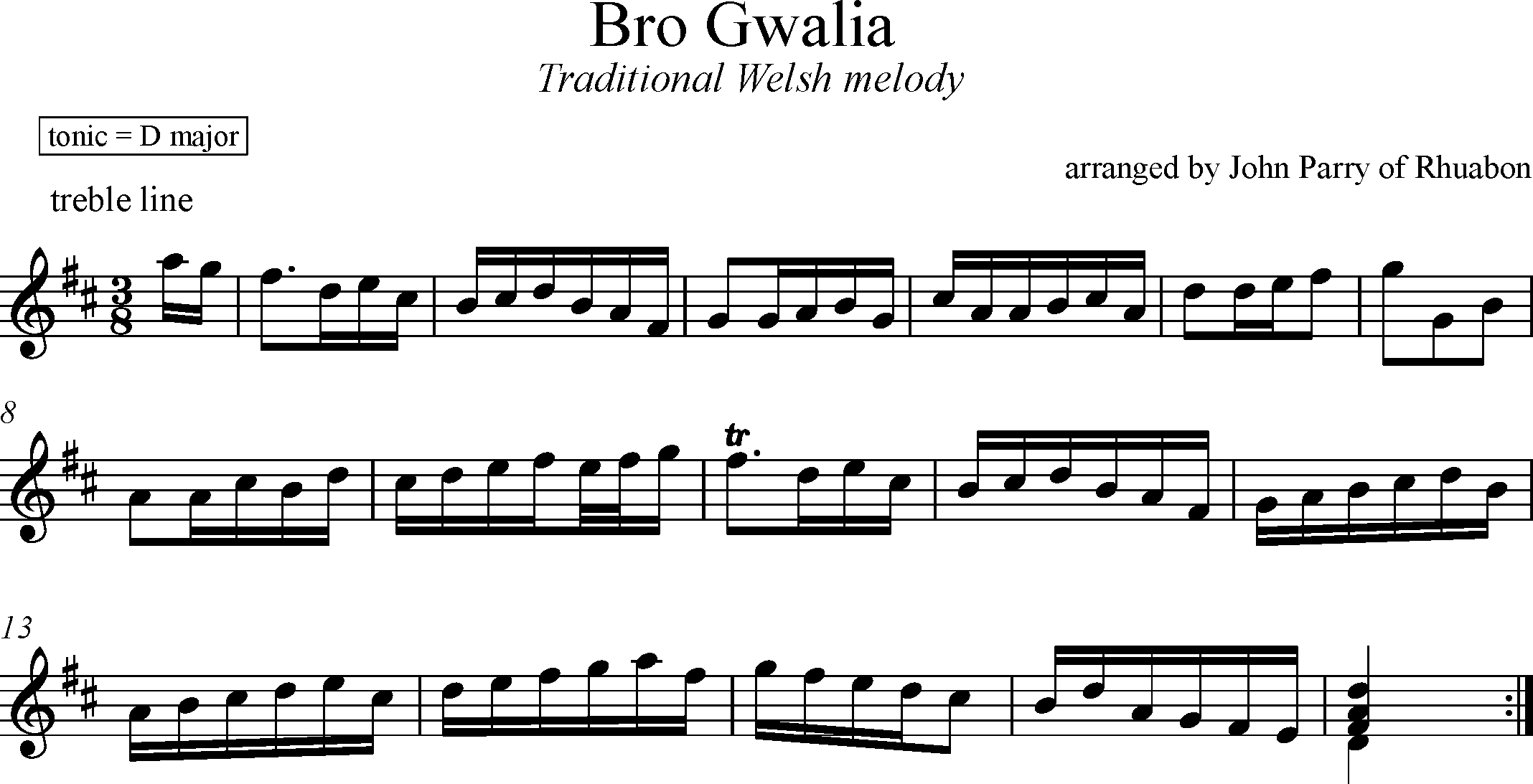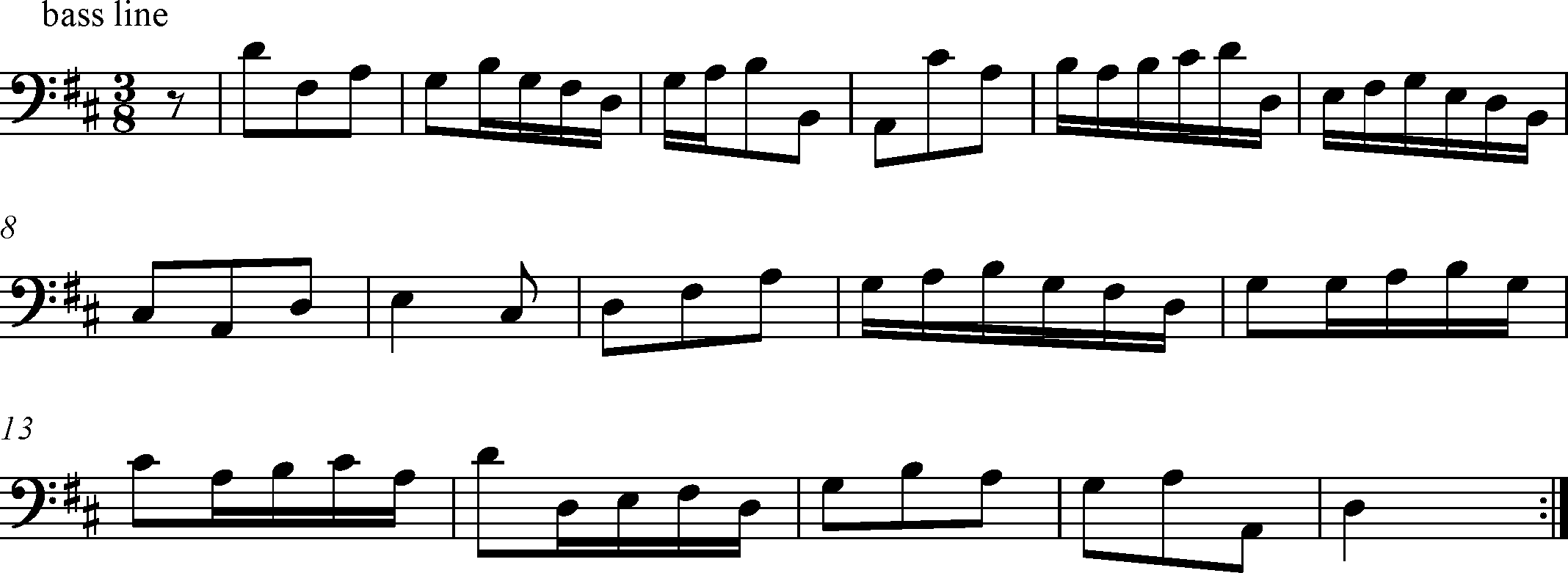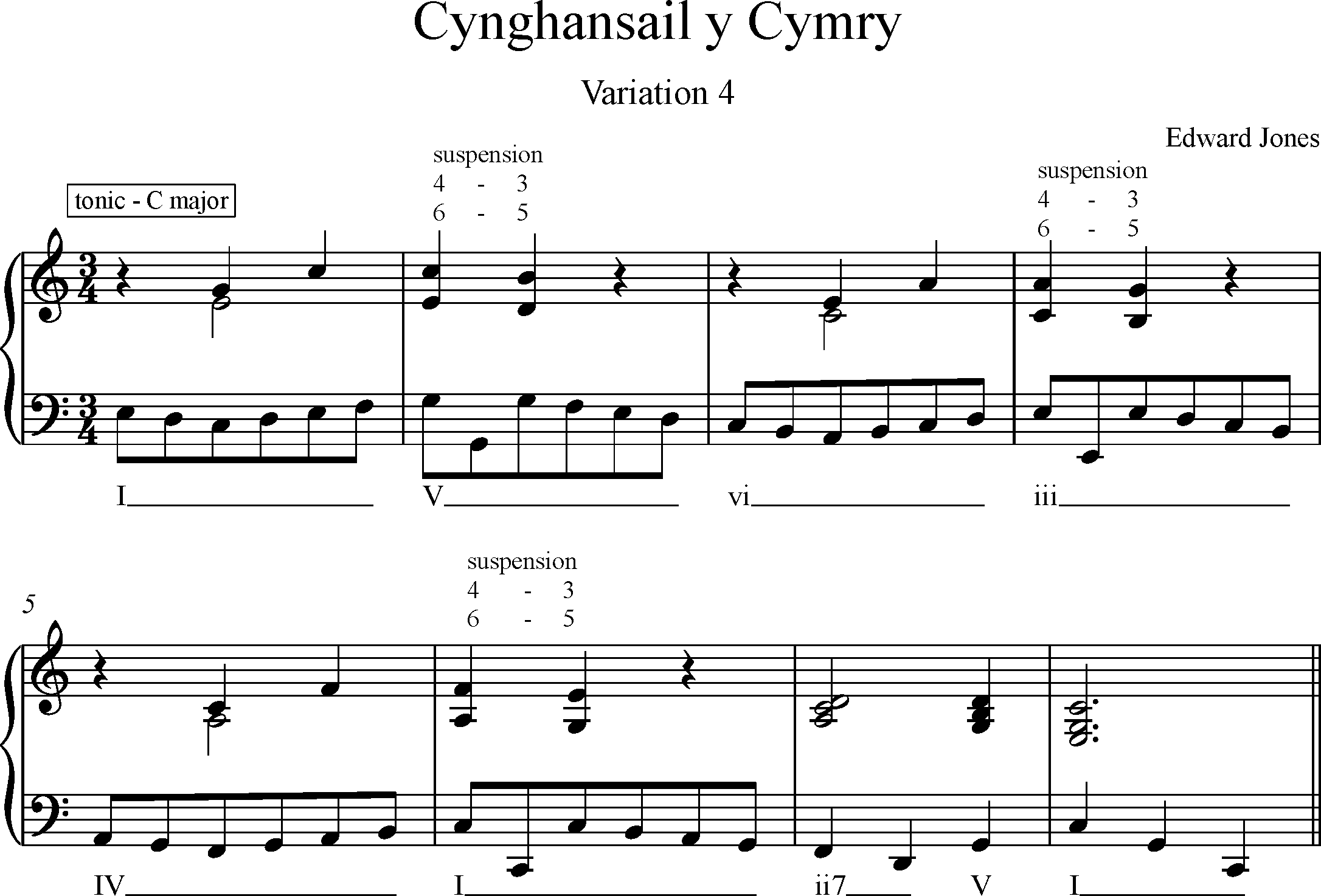Exercise 1
Play the melody of the treble part (figure 1), then the melody of the bass part (figure 2) from Bro Gwalia which is an arrangement by harpist John Parry of Ruabon of a traditional Welsh air.
Suggest a pattern of chords to support the melodies independently of one another.
Fig. 2

Fig. 3

Listen to both lines (figure 3) combined and make a note of the pattern of chords used by Parry.
Fig. 3

Consider how effective both melodies are in this arrangement by John Parry.
Propose changes – or a completely original line, either instead of the treble line or the bass line.
Exercise 2
Another example of counterpoint is Cynghansail y Cymry by Edward Jones (who earned the title The King’s Harpist). Here is a series of variations based on a ground bass for harp.
Notice how Jones combines a variation of the melody, which includes suspensions in the treble, and a melody running in quavers in the bass. Also, there is a suspension as the first two bars are repeated at an interval of a 3rd lower in bars 3 – 4 and again in bars 5 – 6.
Fig. 4

Consider how effective these two melodies are in this piece by Edward Jones.
Bach demonstrates the art of creating elaborate counterpoint in his collection of 15 Two-part Inventions for keyboard. Number 8 is in binary form and starts as a canon at the octave.
Listen to a recording of invention number 8 in F major and analyse;
- the lines of counterpoint
- the harmonic pattern